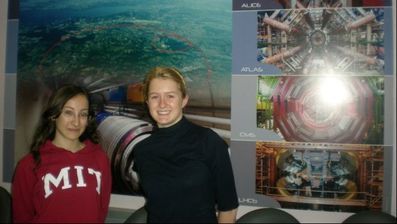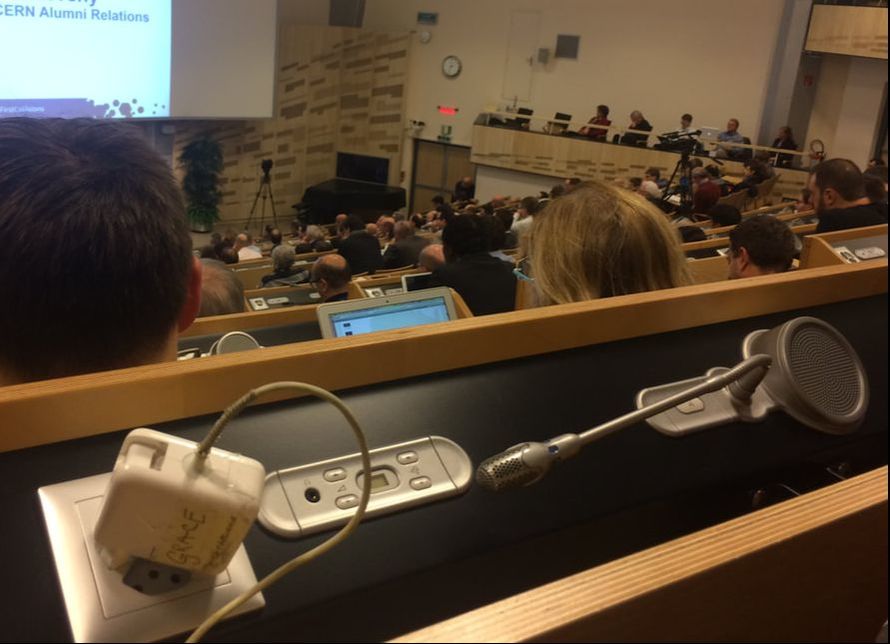Last spring I returned to CERN for its first-ever alumni event, cleverly titled First Collisions. I led a discussion with fellow alumni about how the CERN community can solve problems facing our planet and answer big questions about our ocean. I proposed a “CERN for the planet”, which extended the “CERN for the ocean” idea from my 2015 TIME op-ed. The notion is that we’ve big environmental problems that require highly focused collaborative science to solve, and the ocean’s biggest problems are planet-wide. Not only is CERN a useful model, but its infrastructure and community of scientists can address the urgent mega-problems facing our planet.
More than the opportunity to speak, I valued the chance to springboard ideas with fellow alumni and connect with old and new friends. I also spent a morning with the women in technology group, where I shared about how CERN shaped my career (that talk online here).
More than the opportunity to speak, I valued the chance to springboard ideas with fellow alumni and connect with old and new friends. I also spent a morning with the women in technology group, where I shared about how CERN shaped my career (that talk online here).
“For physics enthusiasts like me, CERN more than rivals Disney World,” I wrote before my first trip to the multi-billion dollar facility as a high schooler (that blog at cern2010.wordpress.com).
What is CERN and Why Care?
Based in Geneva, CERN is a unique, multinational research organization that studies the fundamental physics of our universe, pushes technological boundaries, trains countless scientists and engineers, and facilitates dialogue among nations through science. While it employs ~2,500 full-time scientist, engineers, and staff, its treasure trove of equipment and laboratory space is available to more than 11,000 scientists from 100 countries [source].
| To understand CERN’s goals and why people (not just particle physicists!) are so excited about it, I recommend watching Professor Brian Cox’s 2008 TED talk next time you’ve 18 minutes. Additionally, this excellent slew of New York Times articles and this Vanity Fair article explain CERN through engaging stories and accessible language. CERN has also become famous for being the birthplace of the World Wide Web, inventing cloud computing, featuring in Dan Brown’s Angels and Daemons, and getting fear-mongers worried about a black hole over Switzerland. It runs a particle accelerator called the Large Hadron Collider (LHC) along with other one-of-a-kind experiments. CERN and its community comprise thousands of multinational, multidisciplinary scientists. We care about CERN because it demonstrates the power of collaborative science on a massive scale to solve big problems, promotes high-level dialogue among nations through the medium of science, and informs global policymakers on urgent scientific issues. | "The L.H.C. is not merely the world’s largest particle accelerator but the largest machine ever built. At the center of just one of the four main experimental stations installed around its circumference, and not even the biggest of the four, is a magnet that generates a magnetic field 100,000 times as strong as Earth’s. And because the super-conducting, super-colliding guts of the collider must be cooled by 120 tons of liquid helium, inside the machine it’s one degree colder than outer space, thus making the L.H.C. the coldest place in the universe." -- Kurt Andersen for Vanity Fair “People think CERN is huge,” said an accelerator physicist during my first trip to CERN. He continued, “but it is minuscule on the size of the universe, which is what we are studying.” |
The Power of MultiNational Science
| CERN has 22 member countries, but hosts collaborating scientists from 100+ countries. In practice this means many different languages spoken in the cafeteria. Researchers must navigate not only their subject matter, but also cultural, language, and scheduling barriers. The technical challenge of sharing resources between geographically-spaced researchers spurred CERN to invent cloud-computing, technology that is now ubiquitous in data management and applications. CERN did so out of necessity, so that it could effectively use computing power spread across it’s many collaborating universities and countries around the world. In the same 10 seconds I’ve had someone hold up a fork and ask me “what is the name for this again?,” and then “what is supersymmetry?” English isn’t the first language for many. People aren’t afraid to ask for clarification. In addition to helping work though the language, this forces collaborators to think intentionally about their choice of words and iterate how to communicate it. I find that after a few days I unconsciously communicate in simpler language, a good habit for scientists to develop. For these reasons and others, CERN is also seen as a peacekeeping tool. A new experiment (both scientific and political), called SESAME , is copying CERN in the Middle East. Researchers from eight middle eastern are working side-by-side to answer fundamental questions about our universe. Post-WWII, CERN was a safe place for multinational dialogue through the medium of science where scientist from adversary nations worked side-by-side (see Sixty Years of Science for Peace). It provided and organizational framework for scientists to work across borders to achieve common goals for the common good. Consequently, CERN does much more than answer questions about particle physics; it represents a paradigm for collaborative science on a massive scale solving big technological problems while promoting international comity. | The L.H.C at CERN collides particles at 99.9999991% the speed of light. That’s roughly 3 MILLION times faster than the top speed of a Ferarri. |
... To be continued!
CERN alumna turned deep-sea explorer (CERN Symmetry Magazine)
Spotlight on CERN Alumni - Meet Grace C. Young (CERN Symmetry Magazine)



 RSS Feed
RSS Feed
